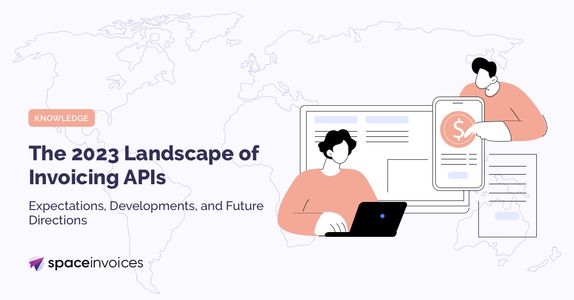The 2023 Landscape of Invoicing APIs: Expectations, Developments, and Future Directions
Invoicing APIs have emerged as a pivotal technological innovation, transforming how businesses handle their invoicing processes.
I. Introduction to Invoicing APIs
The digital transformation that has swept across industries worldwide has also deeply impacted the domain of invoicing. Invoicing APIs have emerged as a pivotal technological innovation, transforming how businesses handle their invoicing processes. This article delves into the state of invoicing APIs in 2023, the evolving expectations of users, and the advancements in technology.
II. The Role and Benefits of Invoicing APIs
Invoicing APIs serve as a crucial interface that allows software applications to interact and exchange data. They are instrumental in enabling businesses to issue invoices, track accounts receivable, and streamline their financial processes. The capability to create and manage invoices at scale is an invaluable feature of these APIs, particularly for companies dealing with high volumes of transactions.
III. User Expectations from Invoicing APIs
One of the key expectations from invoicing APIs in 2023 is the ability to integrate seamlessly with existing systems, allowing businesses to automate their invoicing workflows without introducing disruptive changes. Furthermore, businesses demand flexibility from invoicing APIs, expecting them to accommodate unique business operations, provide support for discounts and taxes, and offer a versatile line item system.
IV. The Importance of Accuracy and Compliance
Accuracy and correctness are paramount when dealing with financial data. Users expect invoicing APIs to handle data with utmost precision, ensuring invoice totals are accurate and rounding off calculations are done correctly. This requirement extends to tax computations as well, with an expectation for invoicing APIs to be 'tax-aware' and capable of handling varying tax requirements across different regions. Compliance is another critical expectation from invoicing APIs. They must generate locally compliant invoices, catering to the specific requirements of the jurisdiction where the business operates. This includes displaying the correct service period, translating invoices into the required language, and adhering to any other local regulations.
V. Advancements in Tax Return Automation
As businesses continue to globalize and tax regulations become more complex, tax return automation is an area where invoicing APIs have seen significant growth. Automated tax return generation, accuracy improvement through automated logic and validations, and faster return completion through streamlined workflows are some of the areas where these APIs have evolved.
VI. The Rise of e-Invoicing APIs
The development of invoicing APIs has also been influenced by the rise of electronic invoicing or e-Invoicing. E-Invoicing APIs connect invoicing systems to tax authorities, submitting required information on behalf of clients. This development has been mandated by many governments globally, reflecting the importance of e-Invoicing in the current digital age.
VII. Integration with Accounting Software
Another advancement in the realm of invoicing APIs is the integration of accounting software. APIs in this domain allow businesses to treat accounting software as a primary hub, leveraging it to enhance the efficiency of fundamental business processes. This integration automates the process of chasing customers for payments and understanding which invoices have been paid and which haven't.
VIII. The Future of Invoicing APIs
Looking forward, the future of invoicing APIs is geared towards further automation and simplification of invoicing processes. The trend is moving towards end-to-end solutions that save time, increase efficiency, and minimize human error. As these APIs continue to evolve, they are expected to offer more sophisticated features, such as data agnostic functionalities, efficient adjustments of relevant transactions, comprehensive logic and validations, and more flexible compliance models.
IX. Conclusion
In conclusion, the state of invoicing APIs in 2023 is characterized by a blend of advanced technology and growing user expectations. As businesses become more digital, the demand for flexible, accurate, and compliant invoicing APIs will continue to grow.
Additional reading:
Start issuing Invoices, free!
Signup and start issuing compliant invoices from your software in minutes.
Or contact us to get a free implementation consultation.
